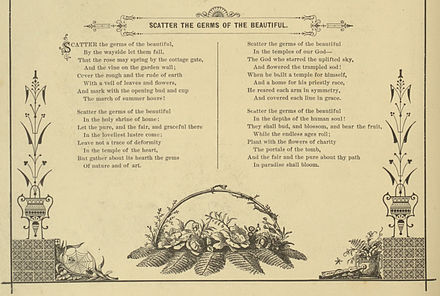
In typography, a dingbat (sometimes more formally known as a printer's ornament or printer's character) is an ornament, specifically, a glyph used in typesetting, often employed to create box frames (similar to box-drawing characters), or as a dinkus (section divider). Some of the dingbat symbols have been used as signature marks or used in bookbinding to order sections.[citation needed]
In the computer industry, a dingbat font or pi font[1] is a computer font that has symbols and shapes located at the code points normally designated for alphabetical or numeric characters. This practice was necessitated by the limited number of code points available in 20th century operating systems. Modern computer fonts containing dingbats are based on Unicode encoding, which has unique code points for dingbat glyphs.
Examples of characters included in Unicode (ITC Zapf Dingbats series 100 and others):
Unicode provides code points for many commonly used dingbats, as listed below. Prior to widespread adoption of Unicode in the early 2010s, "dingbat fonts" were created that allocated dingbat glyphs to codepoints in code positions otherwise allocated to "normal" character sets.
The Dingbats block (U+2700–U+27BF) (under the original block name "Zapf Dingbats", so named for type designer Hermann Zapf) was added to the Unicode Standard in October 1991, with the release of version 1.0. This code block contains decorative character variants, and other marks of emphasis and non-textual symbolism. Most of its characters were taken from Zapf Dingbats. The block name was changed from "Zapf Dingbats" to "Dingbats" in June 1993, with the release of 1.1.[4][5]
The Ornamental Dingbats block (U+1F650–U+1F67F) was added to the Unicode Standard in June 2014 with the release of version 7.0. This code block contains ornamental leaves, punctuation, and ampersands, quilt squares, and checkerboard patterns. It is a subset of dingbat fonts Webdings, Wingdings, and Wingdings 2.[6]